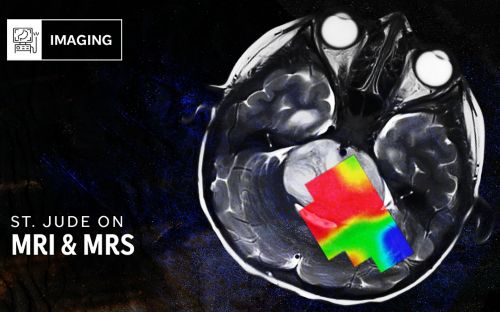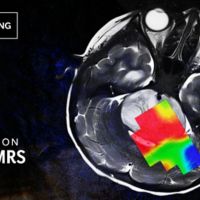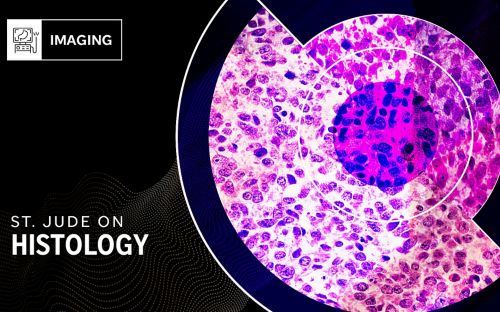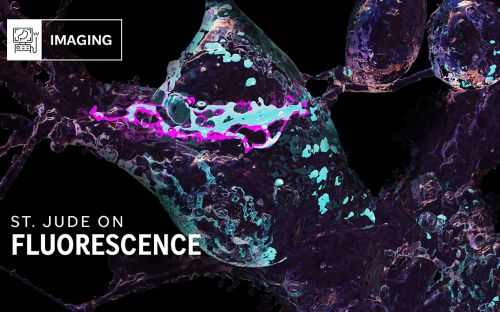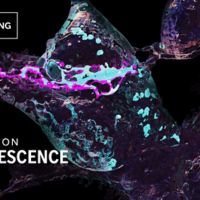Engineering a new kind of therapy

Scientists at St. Jude are studying a type of immunotherapy called a CAR T cell, to learn how to make this treatment approach more widely applicable to pediatric cancer patients.
Your immune system plays a critical role in keeping you healthy. It protects you from infection by pathogens like viruses and bacteria. Many components of these pathogens can be recognized by your immune system and trigger an immune response.
These components are called antigens, and can be recognized by certain immune cells, called B cells and T cells. Whether antigens are still outside one of your cells or have already infected a cell, they can still be detected by your B cells and T cells, respectively. B cells secrete antibodies, which are proteins that bind with very high specificity to molecules on the outside of pathogens, tagging them for further attack by the immune system and blocking them from infecting healthy cells. T cells, on the other hand, can recognize antigens that signal when a cell has already been infected.
Harnessing the immune system as a way to treat diseases such as cancer is an idea with a long history that has become a revolution in this era of modern medicine. By learning about the immune system, scientists at St. Jude are on the leading edge of immunotherapy.
How T cells recognize pathogens
Understanding how the immune system functions is at the root of being able to modify it therapeutically. Most cells will take bacterial or viral antigens they encounter and present them on their cell surface. The cells present these small pieces of pathogens via a protein called the major histocompatibility complex (MHC). T cells use a molecule on their surface called a T cell receptor (TCR) to recognize antigens presented in the context of the MHC, allowing them to get a look at what’s going on inside a cell.
When a T cell recognizes its target antigen via its TCR, it can then carry out one of several functions, depending on what type of T cell it is. For instance, some T cells directly kill infected cells to prevent the pathogen from spreading, while others send signals to enhance the overall immune response.
The T-cell recognition system works well to find and fight pathogens like bacteria and viruses, but what if we want the immune system to recognize a threat that’s a little closer to home? Not a virus or other pathogen, but a self-cell that’s gone bad: a cancer cell.
Making T cells to kill cancer
There has been growing interest over the last several decades in using the immune system to treat cancer, particularly to take advantage of the immune system’s inherent ability to distinguish between healthy cells and “sick” cells. Scientists now know that many cancer patients have T cells that can recognize antigens derived from the mutated proteins in cancer cells (called neoantigens) and that T cells can kill cancer cells. However, because cancer cells are so similar to healthy cells, the immune response mounted against a tumor is often too small to destroy it completely. So how can we make these T cells stronger and more likely to wipe out cancer?
To harness the power of T cells to kill tumors, scientists have begun engineering them to use a completely new kind of receptor that directly targets T cells to cancer cells. This new kind of receptor is called a chimeric antigen receptor, or CAR.
“Chimeric” means that CARs are made of parts from several distinct molecules. “Antigen receptor” means a CAR’s job is to bind to an antigen to trigger an immune response, similar to a normal TCR. CARs are, in fact, part antibody and part TCR: the part of the CAR that recognizes the tumor comes from an antibody that is known to bind the target antigen, while the part of the CAR that sends signals to activate the T cell comes from a TCR. Some CARs also incorporate parts of other signaling proteins that can help activate the T cell even more strongly.
CARs offer a few potential advantages over TCRs. TCRs can only recognize antigens presented on the cell surface by MHC. MHC molecules vary widely from person to person; in fact, they are the molecules that need to be “matched” for organ or bone marrow transplants and constitute the most variable regions of the human genome. Because of this restriction to MHC, for TCRs to recognize an antigen, they not only have to “match” to the antigen, they also have to “match” to the MHC. This means that a TCR that can recognize an antigen in one person may not be able to recognize it in another person if their MHC is different.
Antibodies, on the other hand, aren’t restricted in this way. Because they bind directly to proteins on the cell surface without requiring them to be presented by the MHC, antibodies recognize an antigen the same way in every person. Antibodies also bind to their target antigens more strongly and specifically than TCRs do.
Scientists therefore swapped the antigen-recognition portion of a TCR for that of an antibody to make CARs. CAR T cells can then recognize any surface protein on a cancer cell with very high specificity, and they can be used in any patient.
CAR T–cell therapies are currently prepared by collecting some of a patient’s own T cells, engineering them with a CAR that should recognize an antigen on their cancer cells, growing them up in large numbers, and infusing those T cells back into the patient. This gives them a full cancer-fighting T-cell army. In fact, many patients at St. Jude have already received treatment with autologous CAR T cells manufactured in our on-site Good Manufacturing Practices (GMP) facility.
Challenges facing CAR T-cell therapy for cancer
One of the major challenges of CAR therapy is identifying surface proteins that are found on the surface of cancer cells but not on the surface of healthy cells. If the target antigen of a CAR is present on the surface of healthy cells, the CAR T cells will attack those healthy cells along with the cancer cells, creating an autoimmune condition. Identifying good CAR target antigens is an active area of research, both at St. Jude and other institutions around the world.
Another challenge to CAR therapy, particularly for solid tumors, is overcoming barriers put up by the tumor to prevent effective attacks by CAR T cells. These include physical barriers that prevent T cells from entering the tumor, signals that suppress immune responses, and fierce competition for nutrients. Again, scientists at St. Jude and elsewhere are actively researching ways to enhance CAR T–cells’ ability to infiltrate and survive the harsh tumor environment so they can effectively eliminate even the most challenging cancers.
CAR T cells may also fail to eliminate cancer when some tumor cells lack the target antigen; these antigen-negative tumor cells can escape CAR recognition and grow to form a CAR-T cell-resistant tumor. To combat this challenge, some researchers are developing CAR T–cell products that target multiple cancer antigens, while others are studying the use of CAR T cells in combination with other therapies.
CAR T cells promise a bright future in the clinic
Even with more preclinical research to be done, CAR T cells have already enjoyed remarkable clinical successes, particularly for blood cancers. To date, there are six Food and Drug Administration approved CAR T–cell therapies. Four of these target CD19, an antigen present on many types of B cell cancers (including B cell acute lymphoblastic leukemia (B-ALL), B-cell non-Hodgkin lymphoma, and others). The other two target BCMA, an antigen present on multiple myeloma.
Many more CAR T–cell products are currently being studied in clinical trials. As of January 2023, ClinicalTrials.gov lists over 1,300 CAR T–cell clinical trials worldwide, a third of which are being conducted in the United States. The CARs being studied in these trials target a wide range of malignancies, including blood cancers like acute myeloid leukemia (AML); adult solid tumors like lung, breast, colon, and pancreatic cancers; pediatric solid tumors like osteosarcoma, retinoblastoma, and neuroblastoma; and brain tumors like glioblastoma and diffuse intrinsic pontine glioma (DIPG).
Preclinical research is also ongoing to identify new targets and CARs, as well as new ways of understanding and enhancing CAR efficacy. For example:
- Paulina Velasquez, MD, St. Jude Department of Bone Marrow Transplantation and Cellular Therapy, and her team added a molecular battery to engager T cells, a variant of CAR T cells, that gets extra mileage out of these cancer killing cells in preclinical models of acute myeloid leukemia (AML).
- Velasquez’s lab also found a way to select cells that when transformed into CAR T cells, are more effective at killing relapsed T-cell acute lymphoblastic leukemia (T-ALL), a disease with a dismal prognosis, in an animal model.
- A collaboration of St. Jude scientists, including Stephen Gottschalk, MD, St. Jude Department of Bone Marrow Transplantation and Cellular Therapy chair, and Taylor Wilson, Paul Thomas, PhD, and Jeremy Chase Crawford, PhD, St. Jude Department of Immunology, demonstrated that the long-term performance of CAR T cells can, in some cases, be predicted before treatment. The research provides a unique cell sequencing-based framework to measure and improve future CAR T–cell immunotherapy performance.
CAR T–cell therapy has already revolutionized how we treat blood cancers, and as new breakthroughs are made in the laboratory, CARs will no doubt continue to improve outcomes for patients with many different tumor types.
To learn more about CAR T–cell clinical trials happening at St. Jude, please visit our clinical trials website.

